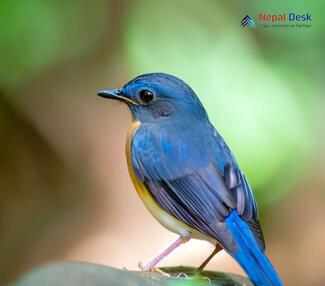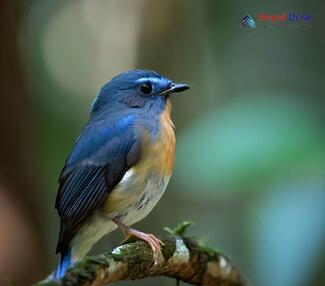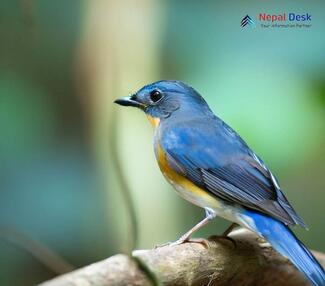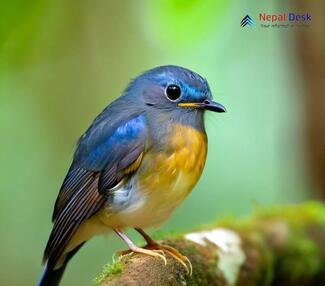The world of birds is vast and diverse, with species that captivate us with their vibrant colors, enchanting songs, and fascinating behaviors. One such bird that truly stands out among others is the Large Blue Flycatcher (Cyornis magnirostris). This stunning bird is not your ordinary backyard visitor; it's a mesmerizing creature that has found its niche in the unique ecosystems of Nepal. In this article, we'll explore the details of the Large Blue Flycatcher's habitat, and its presence in Nepal, and share some fun facts about this spectacular avian gem.
Nestled in Nature: The Habitat of the Large Blue Flycatcher
The Large Blue Flycatcher is a passerine bird belonging to the Muscicapidae family. It finds comfort in dense broadleaf forests located at foothills or lower elevations. This charming bird is often seen flitting about within dark undergrowth or perching patiently on tree branches. Preferring subtropical or tropical moist montane regions, the Large Blue Flycatcher searches for food amidst foliage and leaf litter.
Presence in Nepal: A Welcome Sight for Birdwatchers
Nepal proudly boasts an incredible array of avian life due to its diverse landscapes and climatic conditions. The Large Blue Flycatcher is just one of Nepal's many feathery inhabitants that have caught the attention of bird enthusiasts worldwide. It can be spotted across various regions throughout the country including protected national parks like Bardiya National Park, Chitwan National Park and along several popular trekking routes. Including this enchanting species on your birdwatching checklist would be a noteworthy achievement given its striking beauty.
Fun Facts: Unveiling the Mysteries of the Large Blue Flycatcher
Unique physical traits
The Large Blue Flycatcher is characterized by its almost mesmerizing deep blue plumage. Males possess a bright blue hue, while females exhibit a duller shade of the same color. Sporting a hooked upper mandible, these birds are perfectly equipped to snatch unsuspecting prey from the air or the forest floor.
Diet
As the name suggests, these birds primarily feast upon insects, such as flies, beetles, caterpillars, and other small invertebrates. They are also known to enjoy spiders from time to time.
Song and behavior
The Large Blue Flycatcher's melodic call consists of a sequence of high-pitched notes that can be heard echoing through the forests they inhabit. These birds communicate through various vocalizations and body movements. Like most flycatchers, they exhibit an agile flight pattern while catching fast-moving prey.
Breeding and nesting
The breeding season for these captivating birds usually takes place between April and August. During this time, they are known to construct cup-shaped nests made from plant materials and situate them on tree branches or crevices, providing ample security from predators.
In conclusion, the Large Blue Flycatcher is a truly captivating addition to Nepal's avian inhabitants. Its striking appearance and fascinating behaviors make it an excellent target for birdwatchers and nature lovers alike. So next time you're venturing into Nepal's lush forests, don't forget to keep an eye (and ear) out for this bewitching blue beauty!




